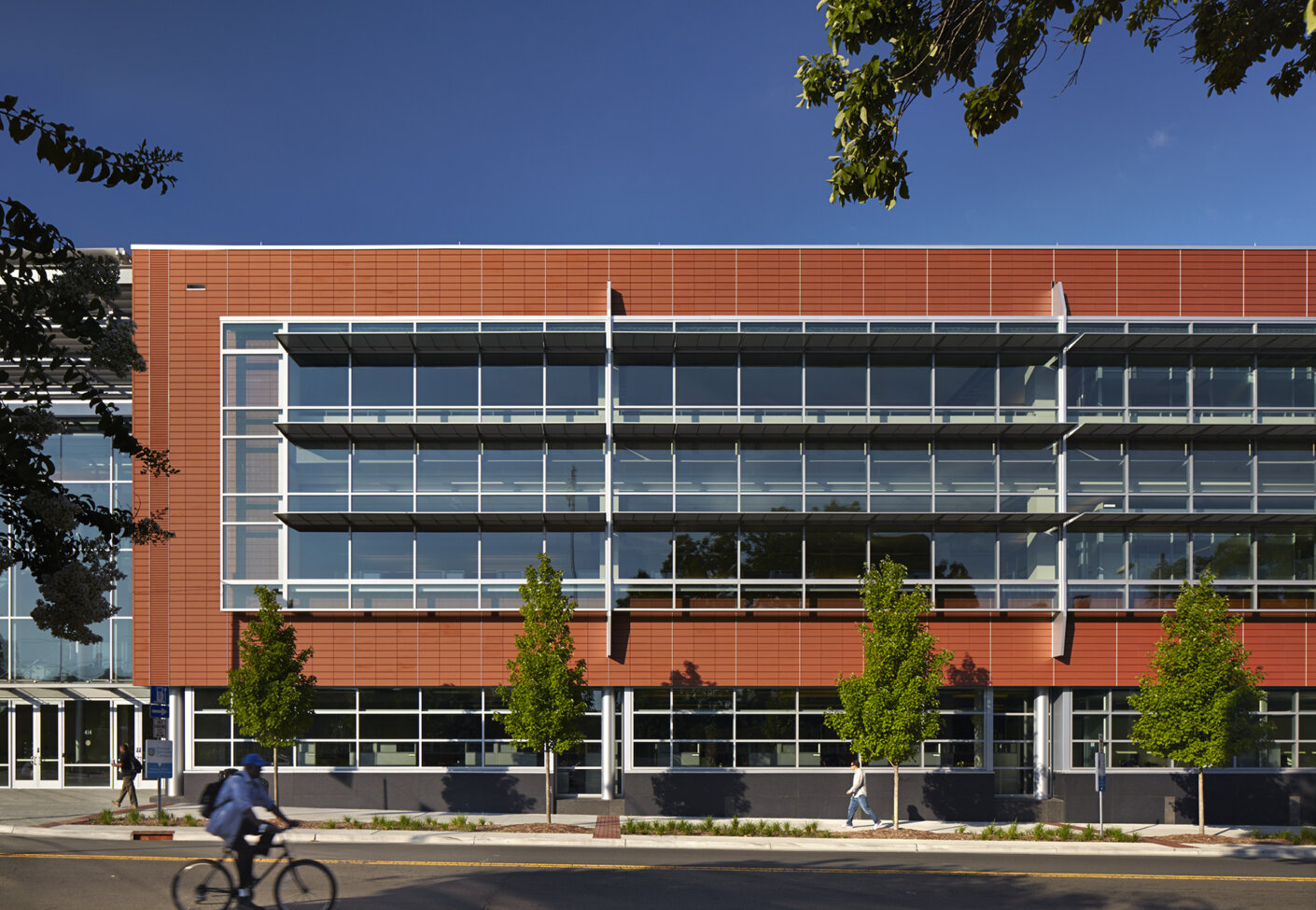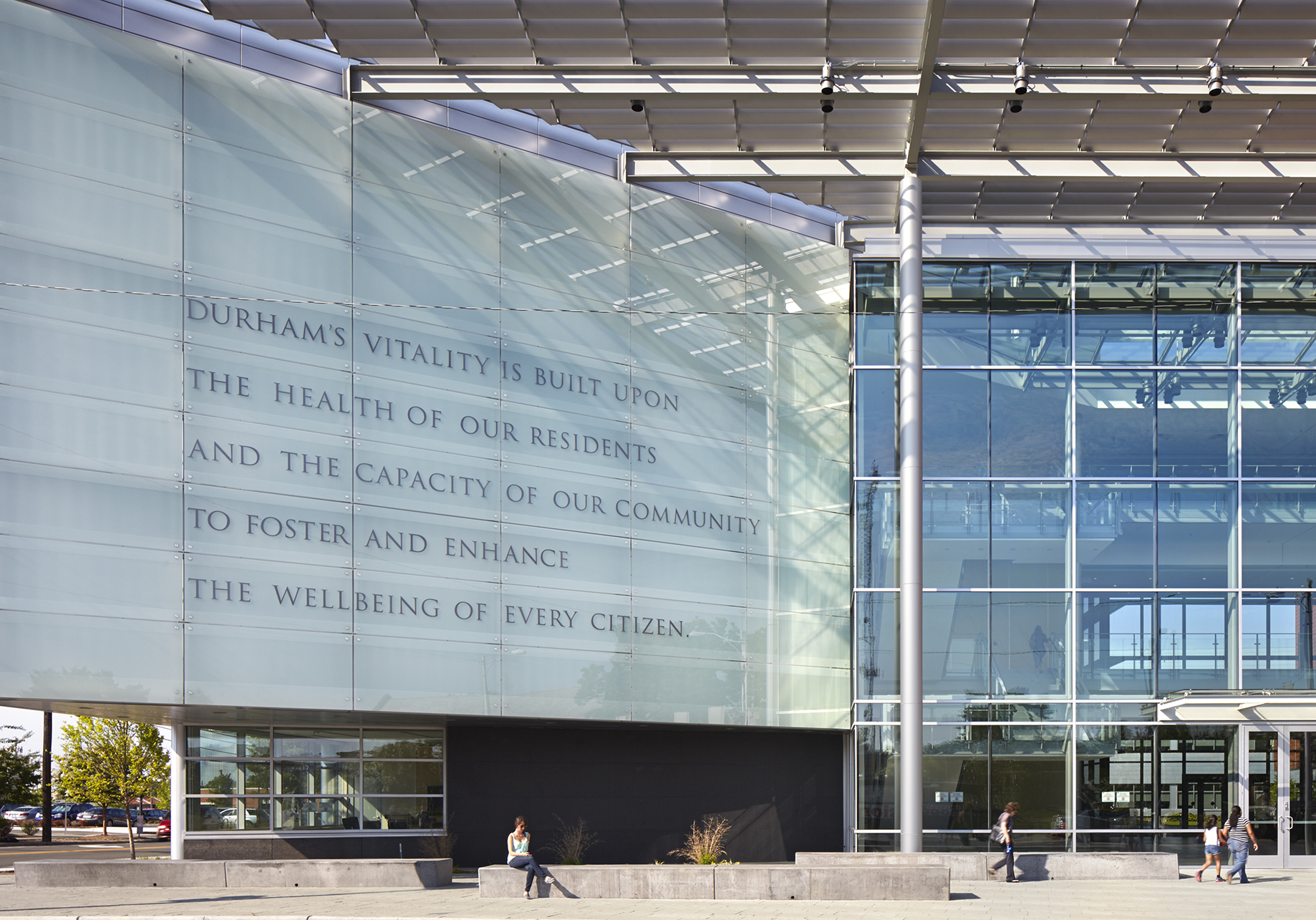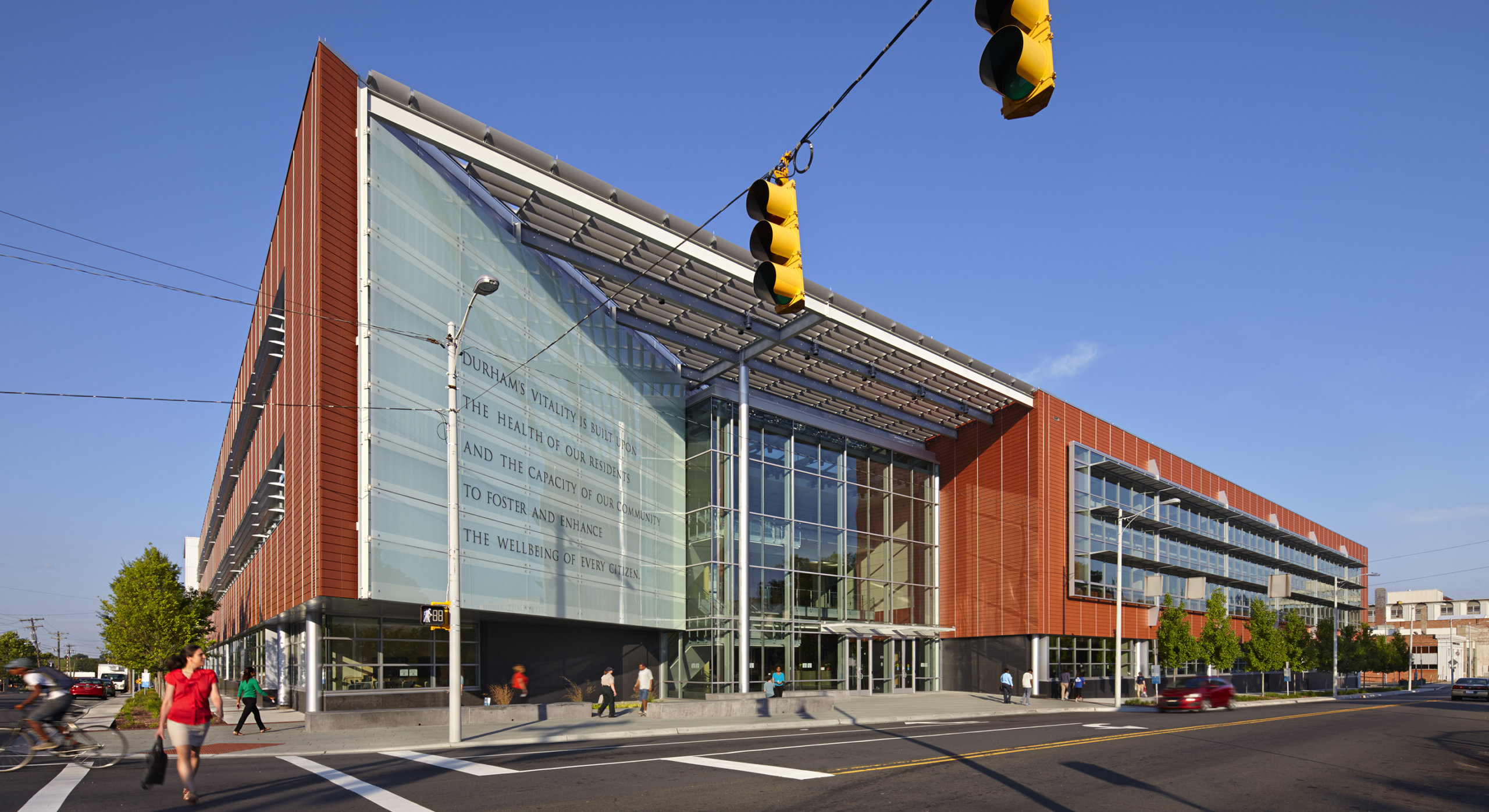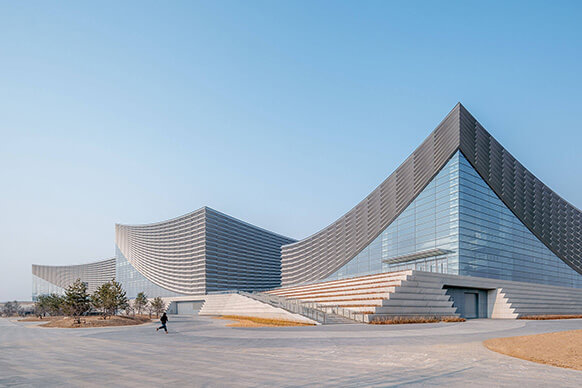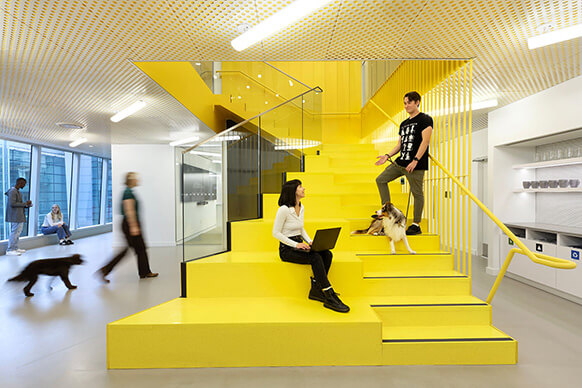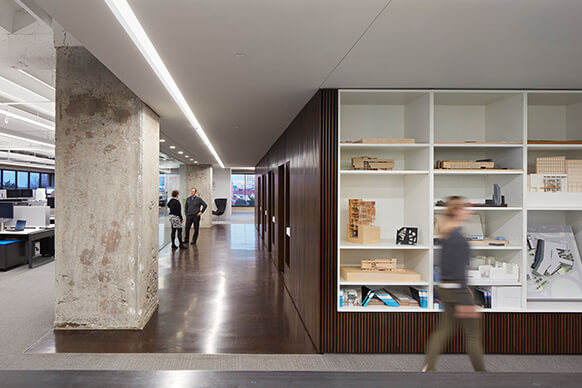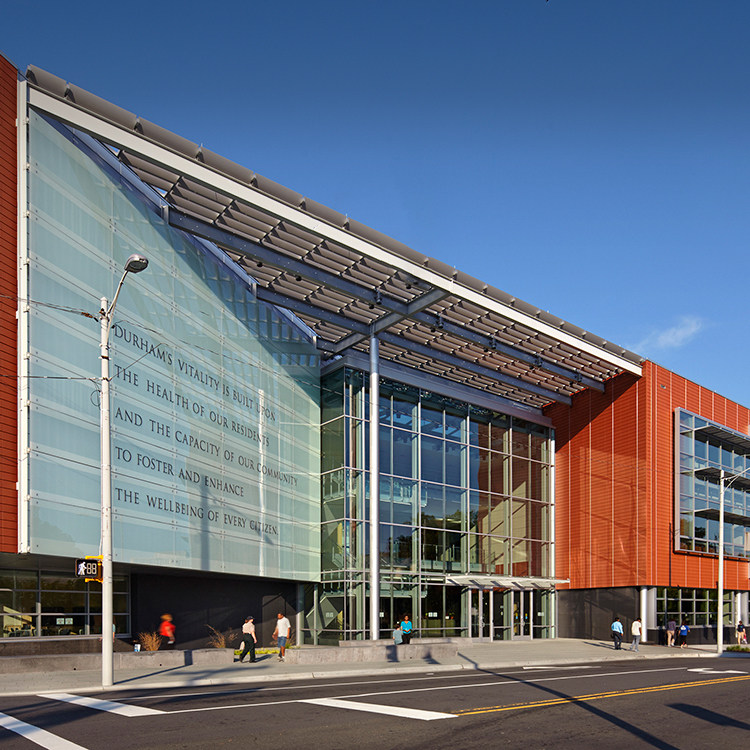
Durham County Human Services Complex
When a community invests in its people, transformative healing spaces can be created. The Durham County Human Services Complex demonstrates how a shift in attitude toward the treatment of underserved populations can elevate experience; bringing dignity and value to the community.
By consolidating community services under one roof, the complex brings all of the county’s human service employees together, promoting streamlined teamwork across agencies. The improved work and visitor experience elevates the level of respect, convenience, and care for the thousands of clients passing through the doors each year. This theme of commitment and respect is prominently displayed in a quote featured on the iconic glass votive wall at the building entrance.
From the much-loved landscaped courtyard to the naturally lighted work areas with ample outside views, the Durham County Health and Human Services Building was designed with its users in mind.
By consolidating community services once scattered around downtown, under one roof, the complex promotes streamlined teamwork across agencies. The improved work and visitor experience elevate the level of respect, convenience, and care for the thousands of clients passing through the doors each year.
In contrast to the former dark offices sans daylight, workers now enjoy access to natural light; privacy-enhancing work stations; and flexible, collaborative spaces. Office spaces were arranged around large “light wells” that bring luminance and volume into the work environment.
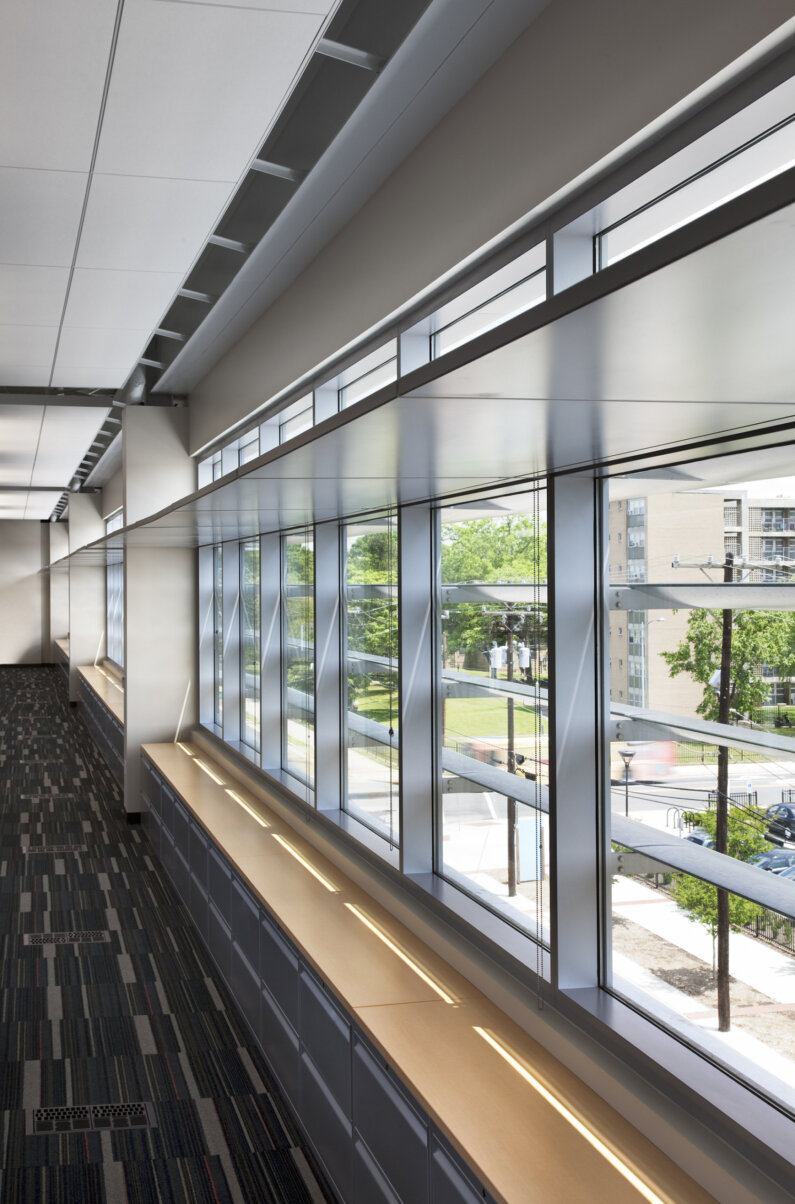

Throughout the process, we shepherded the client through change management, supporting their transition from outdated office areas to a shared and collaborative environment. One of our challenges was shifting the organization from individual private offices into open workstations. By creating more flex and amenity spaces, employees had more options for meeting and working within their new spaces, all of which were animated with daylight and views.
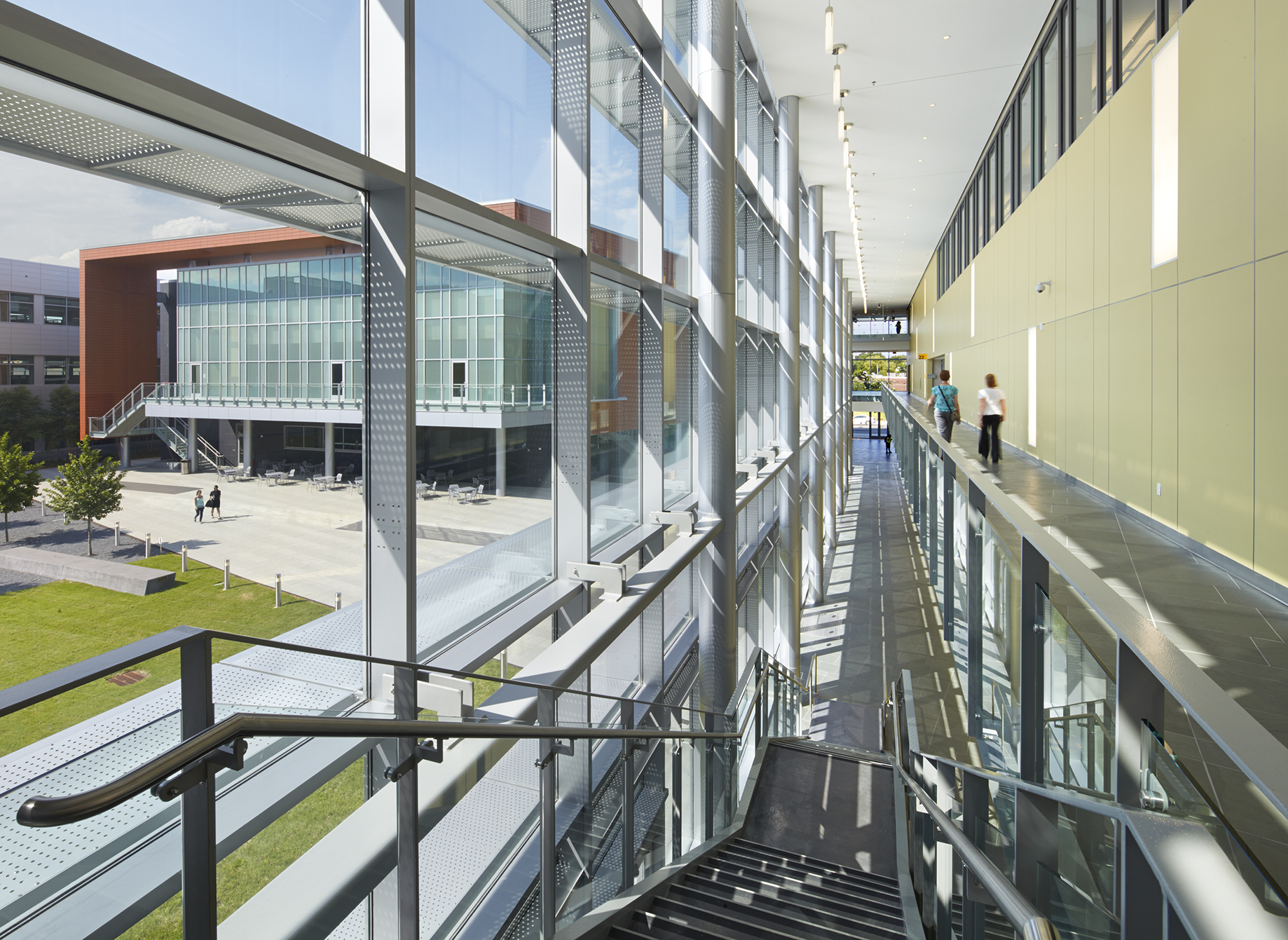

The new building was constructed on the site of the old health department facility, which remained in service during the entire construction of Phase 1. A carefully coordinated phasing strategy was needed to facilitate client and provider access while active construction was ongoing. Staff from the public health department was moved from their old building to their new home at the end of Phase 1. The old health department was demolished to allow the Social Service building areas to be constructed.
